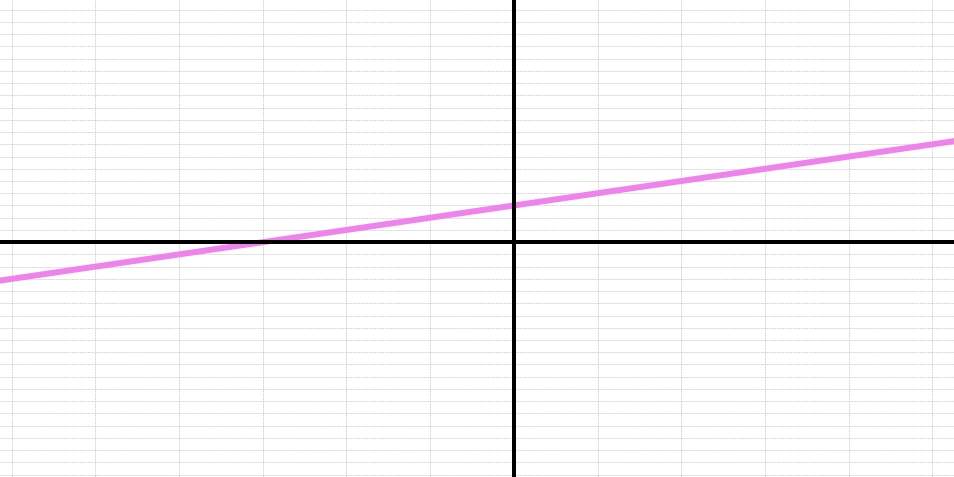Solving Linear Systems Efficiently using NumPy and SciPy
Linear systems of equations are fundamental in fields like physics, economics, engineering, and machine learning. Efficiently solving these systems, especially as the size of the system grows, is crucial for many research problems. In this post, we'll explore how to solve linear systems efficiently using NumPy's powerful linear algebra functions. Understanding the Problem A typical linear system can be represented as: Ax=b A \mathbf{x} = \mathbf{b} Ax=b Where: A is an n×nn \times n n×n matrix of coefficients. x is the column vector of unknowns we want to solve for. b is the column vector of constants on the right-hand side of the equation. NumPy's Linear Algebra Solutions NumPy provides several methods for solving these types of systems, most notably through the np.linalg module. 1. Direct Solution Using np.linalg.solve() The most straightforward method to solve a linear system in NumPy is by using np.linalg.solve(), which computes the exact solution (if it exists) of Ax=bA \mathbf{x} = \mathbf{b} Ax=b . import numpy as np # Example system A = np.array([[3, 1], [1, 2]]) b = np.array([9, 8]) # Solve for x x = np.linalg.solve(A, b) print(x) This function is optimized for solving systems of equations and works efficiently for both small and large matrices. It uses the LU decomposition under the hood, which is more computationally efficient than directly using Gaussian elimination or other naive methods. 2. Using Matrix Decompositions for Custom Solutions If we're working with large, sparse, or ill-conditioned matrices, it's sometimes more efficient to break down the matrix A into simpler components using matrix decompositions. LU Decomposition: Decomposes A into a lower triangular matrix L and an upper triangular matrix U. This can be useful for solving systems multiple times with different right-hand sides b. from scipy.linalg import lu P, L, U = lu(A) y = np.linalg.solve(L, b) # Solve Ly = b x = np.linalg.solve(U, y) # Solve Ux = y print(x) 3. Dealing with Ill-Conditioned Systems In cases where the matrix is ill-conditioned (e.g., near-singular matrices), solving the system directly can lead to numerical instability or inaccurate results. In such cases, it might be better to use singular value decomposition (SVD). U, s, Vt = np.linalg.svd(A) c = np.dot(U.T, b) w = np.linalg.solve(np.diag(s), c) x = np.dot(Vt.T, w) print(x) 4. When A is Sparse If the matrix A is sparse (i.e., it has many zero elements), solving the system directly can be inefficient in terms of both time and memory usage. we can take advantage of specialized libraries like SciPy's sparse linear algebra module for efficient solvers that handle sparse matrices better. from scipy.sparse import csr_matrix from scipy.sparse.linalg import spsolve # Example sparse matrix A_sparse = csr_matrix(A) x_sparse = spsolve(A_sparse, b) print(x_sparse) This is particularly useful when dealing with large, sparse datasets in fields like structural engineering or machine learning. Tips for Efficiently Solving Linear Systems Preconditioning: For ill-conditioned matrices, precondition the system (transform the matrix to improve its condition number). Regularization: In some cases, regularization methods (like Ridge regression) help by adding a small value to the diagonal, improving stability. Iterative Solvers: For extremely large systems, iterative solvers such as Conjugate Gradient or GMRES can be more efficient, especially when the matrix is sparse. Conclusion In various problem statements, solving linear systems is a common and essential task. NumPy and SciPy provide efficient and reliable tools for solving both small and large systems. By understanding and leveraging functions like np.linalg.solve(), matrix factorizations, and SVD, we can tackle increasingly complex systems efficiently. For large-scale problems or ill-conditioned matrices, using specialized techniques such as sparse solvers can offer significant performance improvements.

Linear systems of equations are fundamental in fields like physics, economics, engineering, and machine learning. Efficiently solving these systems, especially as the size of the system grows, is crucial for many research problems. In this post, we'll explore how to solve linear systems efficiently using NumPy's powerful linear algebra functions.
Understanding the Problem
A typical linear system can be represented as:
Where:
- A is an n×nn \times n n×n matrix of coefficients.
- x is the column vector of unknowns we want to solve for.
- b is the column vector of constants on the right-hand side of the equation.
NumPy's Linear Algebra Solutions
NumPy provides several methods for solving these types of systems, most notably through the np.linalg module.
1. Direct Solution Using np.linalg.solve()
The most straightforward method to solve a linear system in NumPy is by using np.linalg.solve(), which computes the exact solution (if it exists) of
Ax=bA \mathbf{x} = \mathbf{b} Ax=b
.
import numpy as np
# Example system
A = np.array([[3, 1], [1, 2]])
b = np.array([9, 8])
# Solve for x
x = np.linalg.solve(A, b)
print(x)
This function is optimized for solving systems of equations and works efficiently for both small and large matrices. It uses the LU decomposition under the hood, which is more computationally efficient than directly using Gaussian elimination or other naive methods.
2. Using Matrix Decompositions for Custom Solutions
If we're working with large, sparse, or ill-conditioned matrices, it's sometimes more efficient to break down the matrix A into simpler components using matrix decompositions.
- LU Decomposition: Decomposes A into a lower triangular matrix L and an upper triangular matrix U. This can be useful for solving systems multiple times with different right-hand sides b.
from scipy.linalg import lu
P, L, U = lu(A)
y = np.linalg.solve(L, b) # Solve Ly = b
x = np.linalg.solve(U, y) # Solve Ux = y
print(x)
3. Dealing with Ill-Conditioned Systems
In cases where the matrix is ill-conditioned (e.g., near-singular matrices), solving the system directly can lead to numerical instability or inaccurate results. In such cases, it might be better to use singular value decomposition (SVD).
U, s, Vt = np.linalg.svd(A)
c = np.dot(U.T, b)
w = np.linalg.solve(np.diag(s), c)
x = np.dot(Vt.T, w)
print(x)
4. When A is Sparse
If the matrix A is sparse (i.e., it has many zero elements), solving the system directly can be inefficient in terms of both time and memory usage. we can take advantage of specialized libraries like SciPy's sparse linear algebra module for efficient solvers that handle sparse matrices better.
from scipy.sparse import csr_matrix
from scipy.sparse.linalg import spsolve
# Example sparse matrix
A_sparse = csr_matrix(A)
x_sparse = spsolve(A_sparse, b)
print(x_sparse)
This is particularly useful when dealing with large, sparse datasets in fields like structural engineering or machine learning.
Tips for Efficiently Solving Linear Systems
- Preconditioning: For ill-conditioned matrices, precondition the system (transform the matrix to improve its condition number).
- Regularization: In some cases, regularization methods (like Ridge regression) help by adding a small value to the diagonal, improving stability.
- Iterative Solvers: For extremely large systems, iterative solvers such as Conjugate Gradient or GMRES can be more efficient, especially when the matrix is sparse.
Conclusion
In various problem statements, solving linear systems is a common and essential task. NumPy and SciPy provide efficient and reliable tools for solving both small and large systems. By understanding and leveraging functions like np.linalg.solve(), matrix factorizations, and SVD, we can tackle increasingly complex systems efficiently. For large-scale problems or ill-conditioned matrices, using specialized techniques such as sparse solvers can offer significant performance improvements.










































































































































































![[The AI Show Episode 146]: Rise of “AI-First” Companies, AI Job Disruption, GPT-4o Update Gets Rolled Back, How Big Consulting Firms Use AI, and Meta AI App](https://www.marketingaiinstitute.com/hubfs/ep%20146%20cover.png)




























































































































![Ditching a Microsoft Job to Enter Startup Hell with Lonewolf Engineer Sam Crombie [Podcast #171]](https://cdn.hashnode.com/res/hashnode/image/upload/v1746753508177/0cd57f66-fdb0-4972-b285-1443a7db39fc.png?#)





























































.jpg?width=1920&height=1920&fit=bounds&quality=70&format=jpg&auto=webp#)




















































-Nintendo-Switch-2-Hands-On-Preview-Mario-Kart-World-Impressions-&-More!-00-10-30.png?width=1920&height=1920&fit=bounds&quality=70&format=jpg&auto=webp#)












































































































-xl.jpg)





























![New iPad 11 (A16) On Sale for Just $277.78! [Lowest Price Ever]](https://www.iclarified.com/images/news/97273/97273/97273-640.jpg)

![Apple Foldable iPhone to Feature New Display Tech, 19% Thinner Panel [Rumor]](https://www.iclarified.com/images/news/97271/97271/97271-640.jpg)





































































![[Weekly funding roundup May 3-9] VC inflow into Indian startups touches new high](https://images.yourstory.com/cs/2/220356402d6d11e9aa979329348d4c3e/WeeklyFundingRoundupNewLogo1-1739546168054.jpg)





























